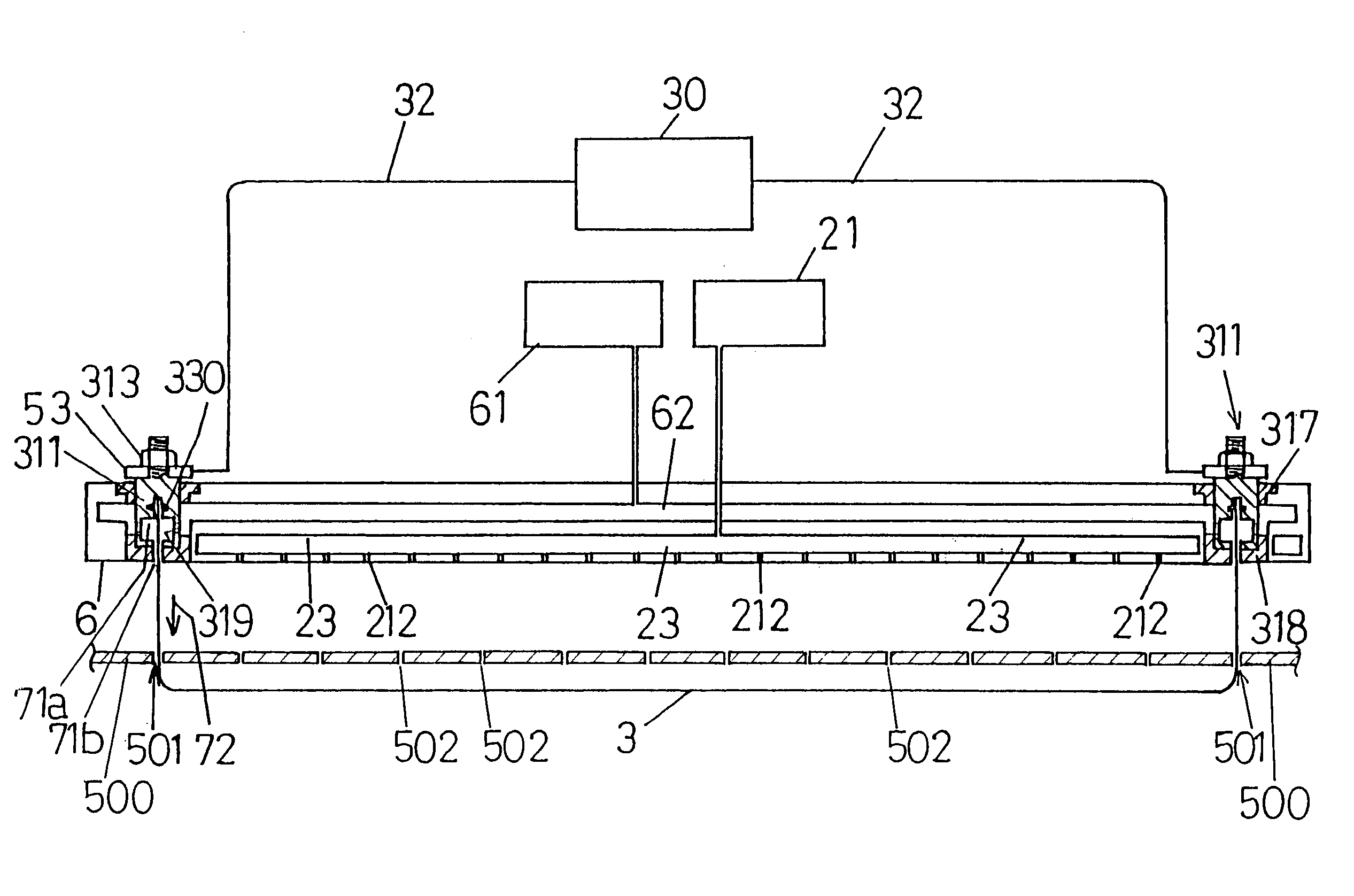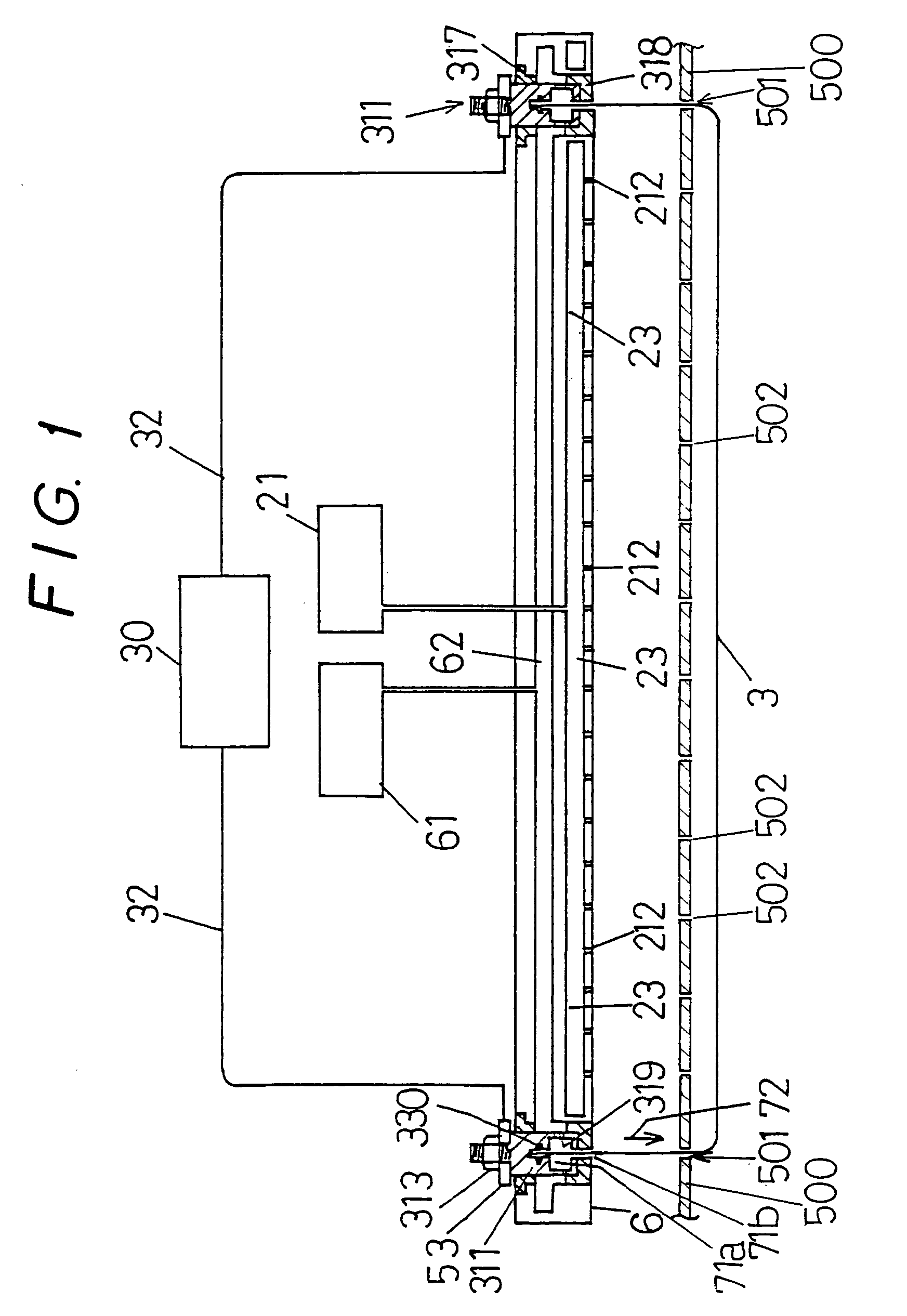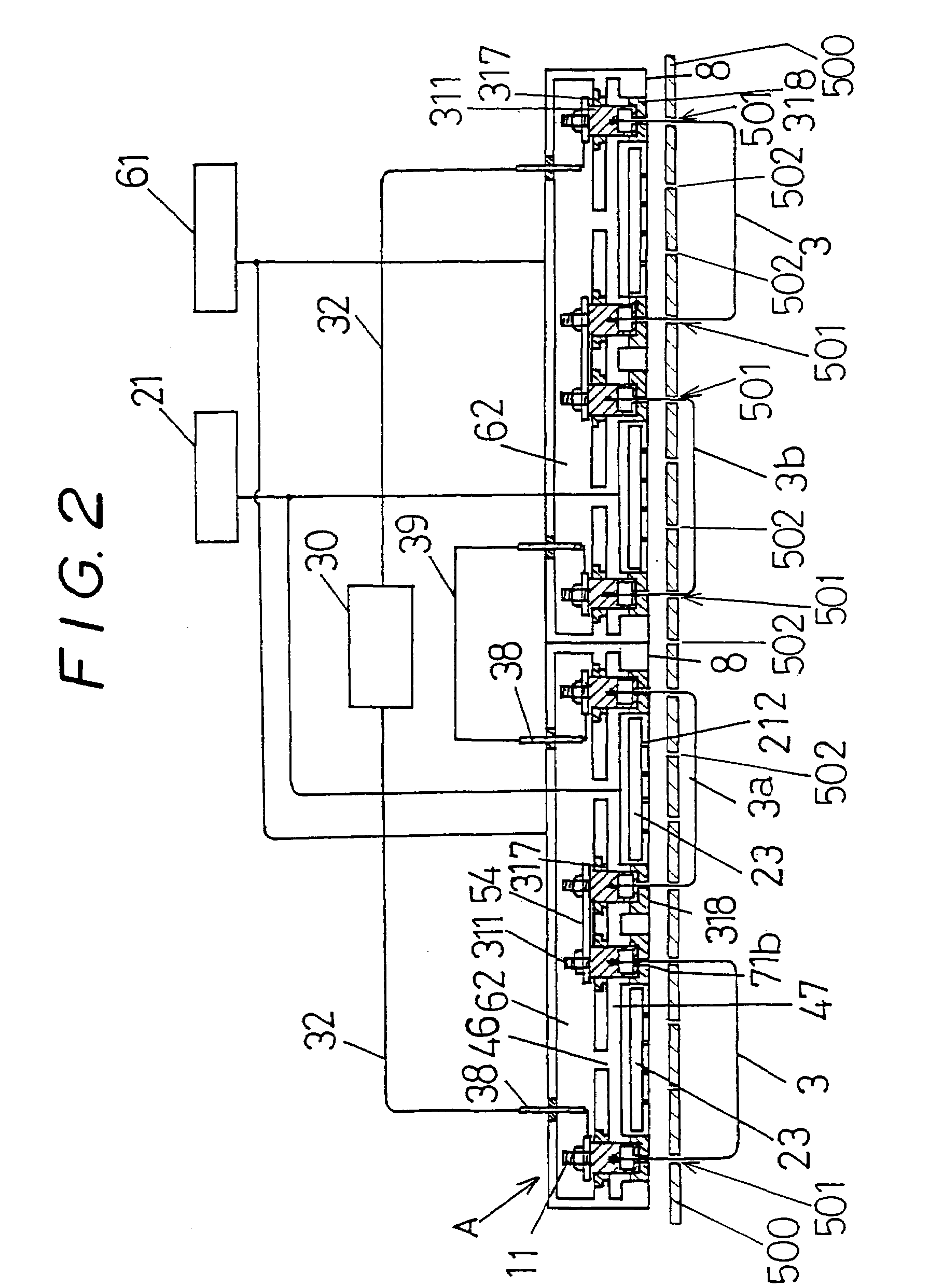Heating element CVD system and connection structure between heating element and electric power supply mechanism in the heating element CVD system
- Summary
- Abstract
- Description
- Claims
- Application Information
AI Technical Summary
Benefits of technology
Problems solved by technology
Method used
Image
Examples
Embodiment Construction
[0062]Preferred embodiments of the present invention will hereinafter be described on the basis of the accompanying drawings.
[0063]FIGS. 1 and 2 show a cross-sectional structure of a connection part between a heating element and an electric power supply mechanism in a preferred embodiment of a heating element CVD system in accordance with the invention.
[0064]The structures of a processing container 1, a substrate holder 4, and an evacuation system 11 and the like in a heating element CVD system in accordance with the invention are the same as those of the above-mentioned conventional heating element CVD system shown in FIG. 7, and hence are omitted in the drawings. Further, same reference numerals are attached to members similar to the members shown in FIG. 7.
[0065]In the embodiment shown in FIG. 1, a connection terminal 311 is held by a connection terminal holder 6 having a first inside hollow portion 62 therein with electrical insulation by insulators 317 and 318.
[0066]In the embo...
PUM
| Property | Measurement | Unit |
|---|---|---|
| Diameter | aaaaa | aaaaa |
| Structure | aaaaa | aaaaa |
Abstract
Description
Claims
Application Information
 Login to View More
Login to View More - R&D
- Intellectual Property
- Life Sciences
- Materials
- Tech Scout
- Unparalleled Data Quality
- Higher Quality Content
- 60% Fewer Hallucinations
Browse by: Latest US Patents, China's latest patents, Technical Efficacy Thesaurus, Application Domain, Technology Topic, Popular Technical Reports.
© 2025 PatSnap. All rights reserved.Legal|Privacy policy|Modern Slavery Act Transparency Statement|Sitemap|About US| Contact US: help@patsnap.com



